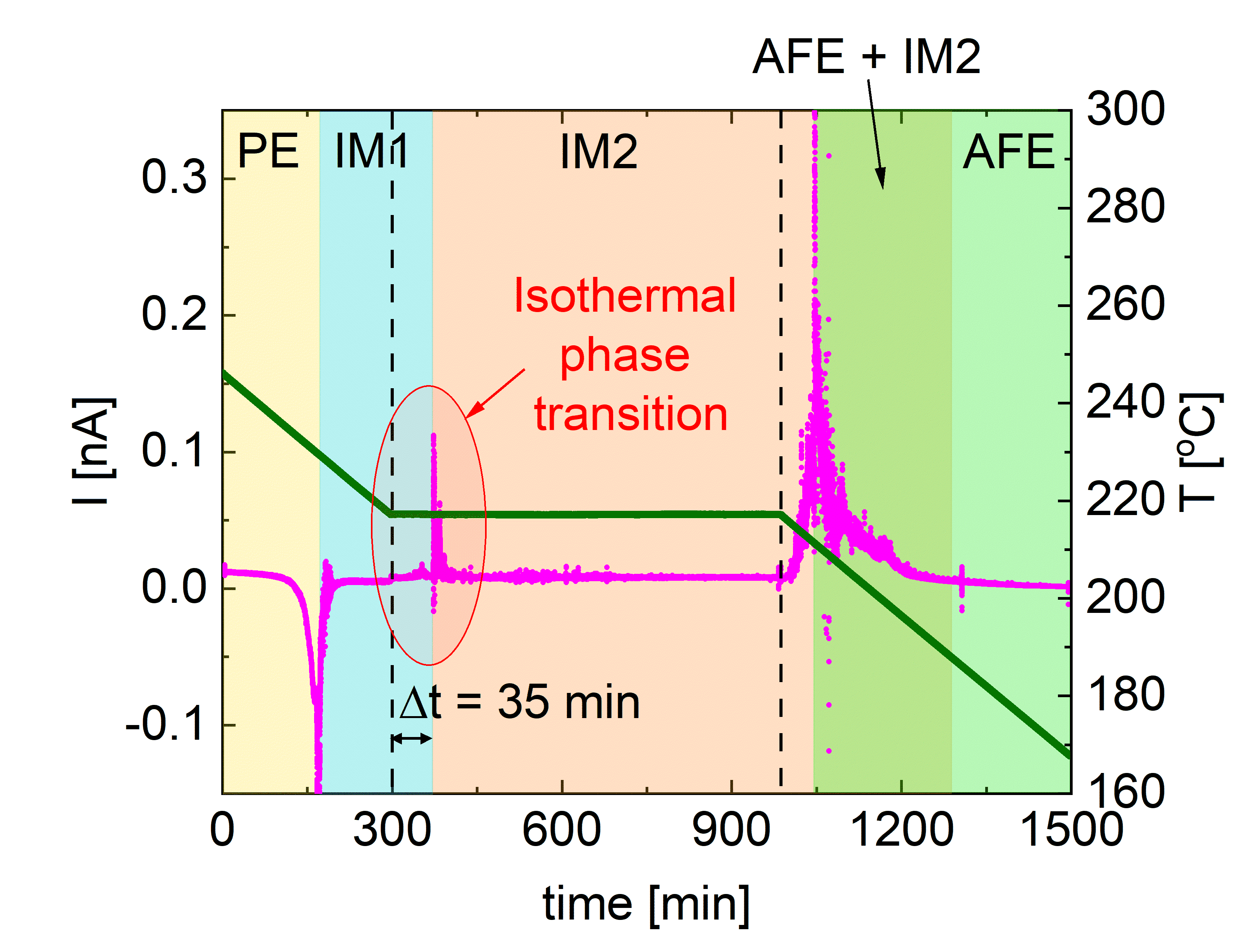
Long-term isothermal phase transformation in lead zirconate
2Institute of Chemistry, University of Silesia, Katowice, Poland
3Institute of Physics, Pedagogical University, Kraków, Poland
4School of Nano Convergence Technology, School of Nano Convergence Technology, Chuncheon, South Korea
5Institute of Applied Physics, Military University of Technology, Warsaw, Poland
Lead zirconate PbZrO3 has been the subject of research interest for several dozen years. Recently, even its antiferroelectric properties have started to be questioned, and many researchers still deal with the so-called intermediate phase below Curie temperature (TC), whose existence is not fully understood.
It turns out that PbZrO3 doped with Nb exhibits below TC phases with complex domain structures [1]. One of them undergoes self-organization taking place at a constant temperature, and transforms, after several minutes, into a lower phase [2].
This isothermal transition was investigated through dielectric, pyroelectric current (Fig 1) and Raman scattering measurements. Discontinuities accompanied it in the permittivity and pyroelectric current.

The obtained Raman spectra proved that those discontinuities are strictly linked with the isothermal transition between two intermediate phases [3]. The ordering process in lead sublattice stimulated by thermal fluctuations is discussed as a driving force for this peculiar phenomenon.
[1] D. Kajewski et al, Phys. Rev. B 93, 054104 (2016)
[2] D. Kajewski, Crystals 10, 501 (2020)
[3] D. Kajewski et al, Materials 15, 4077 (2022)
Powered by Eventact EMS
